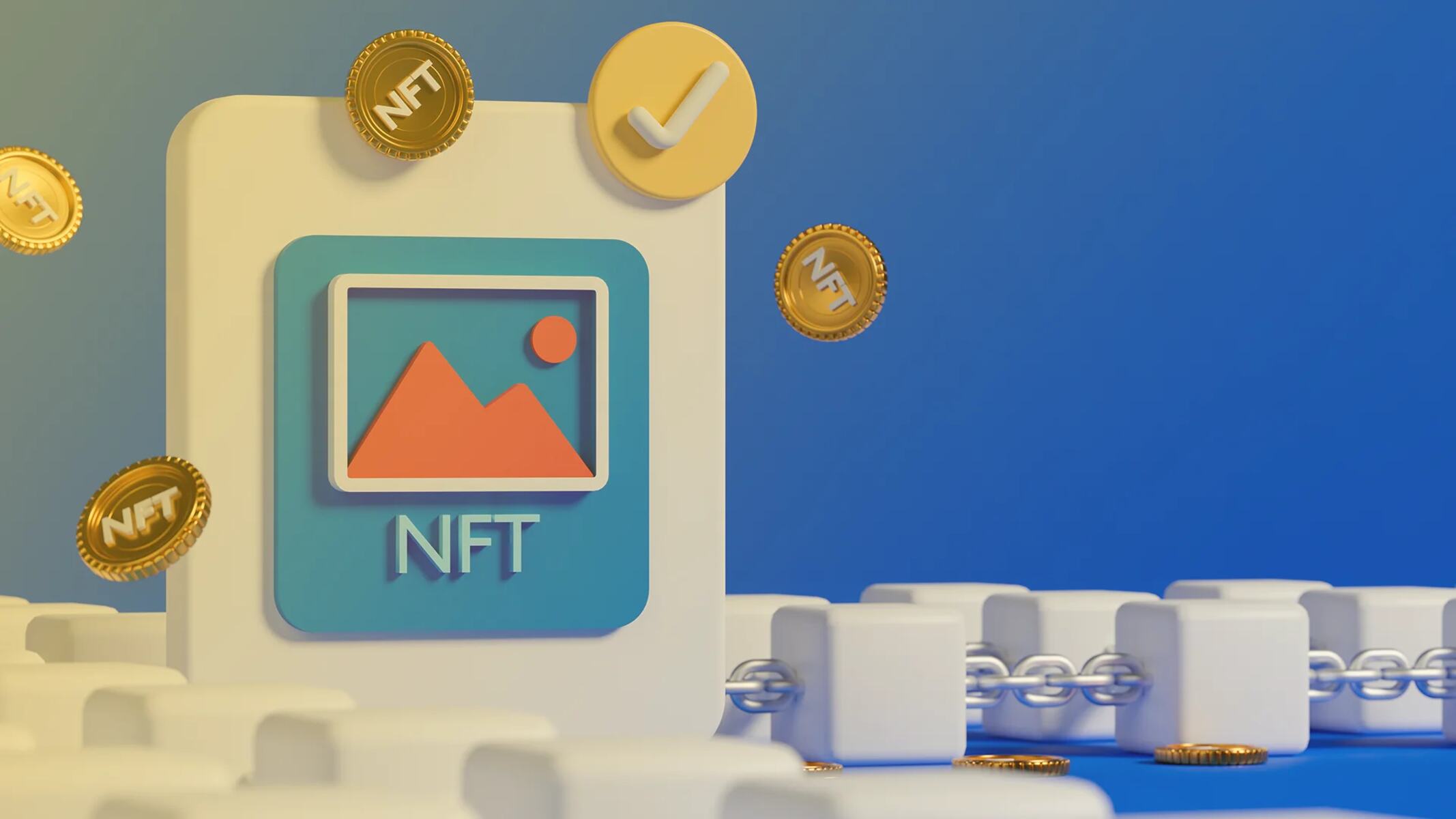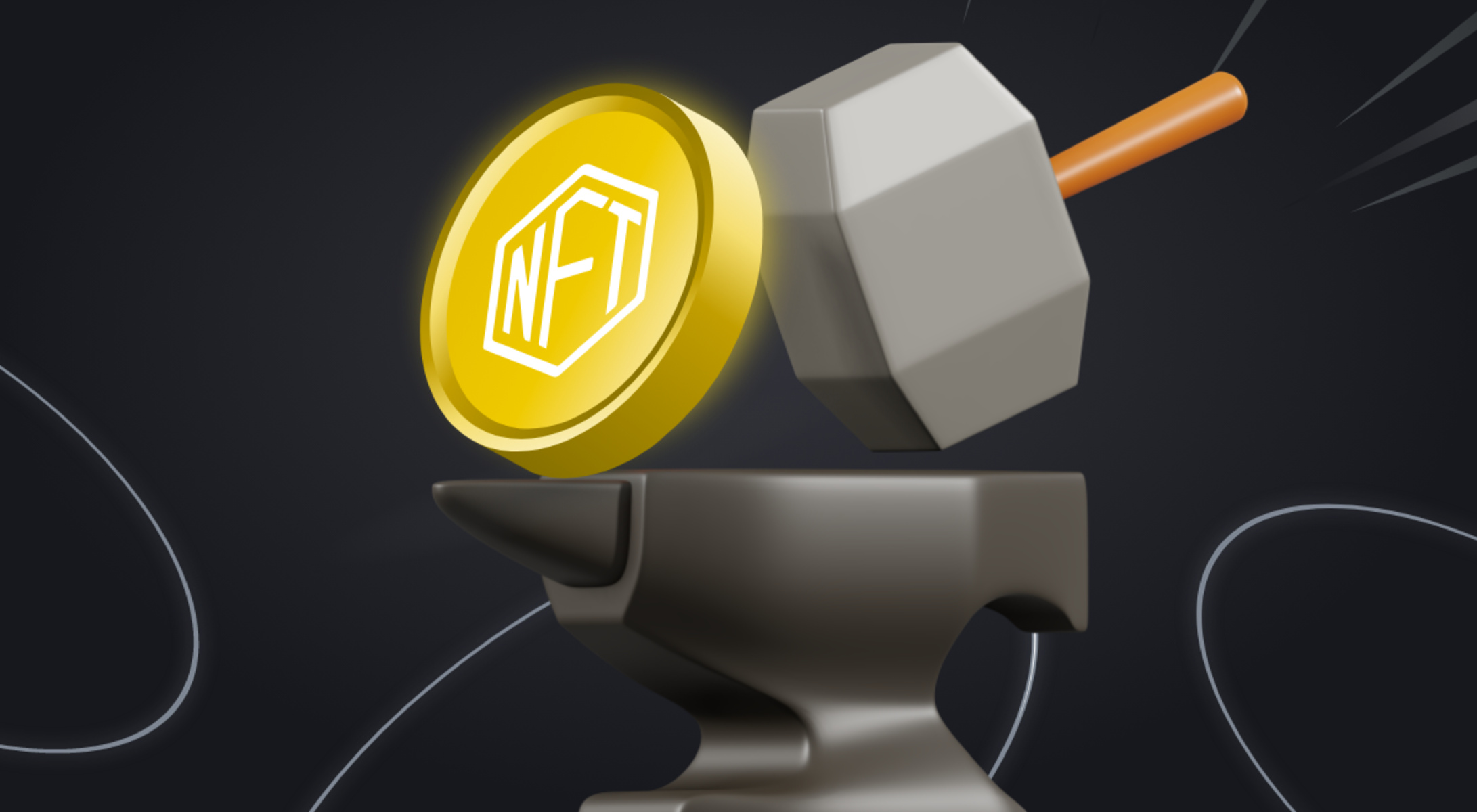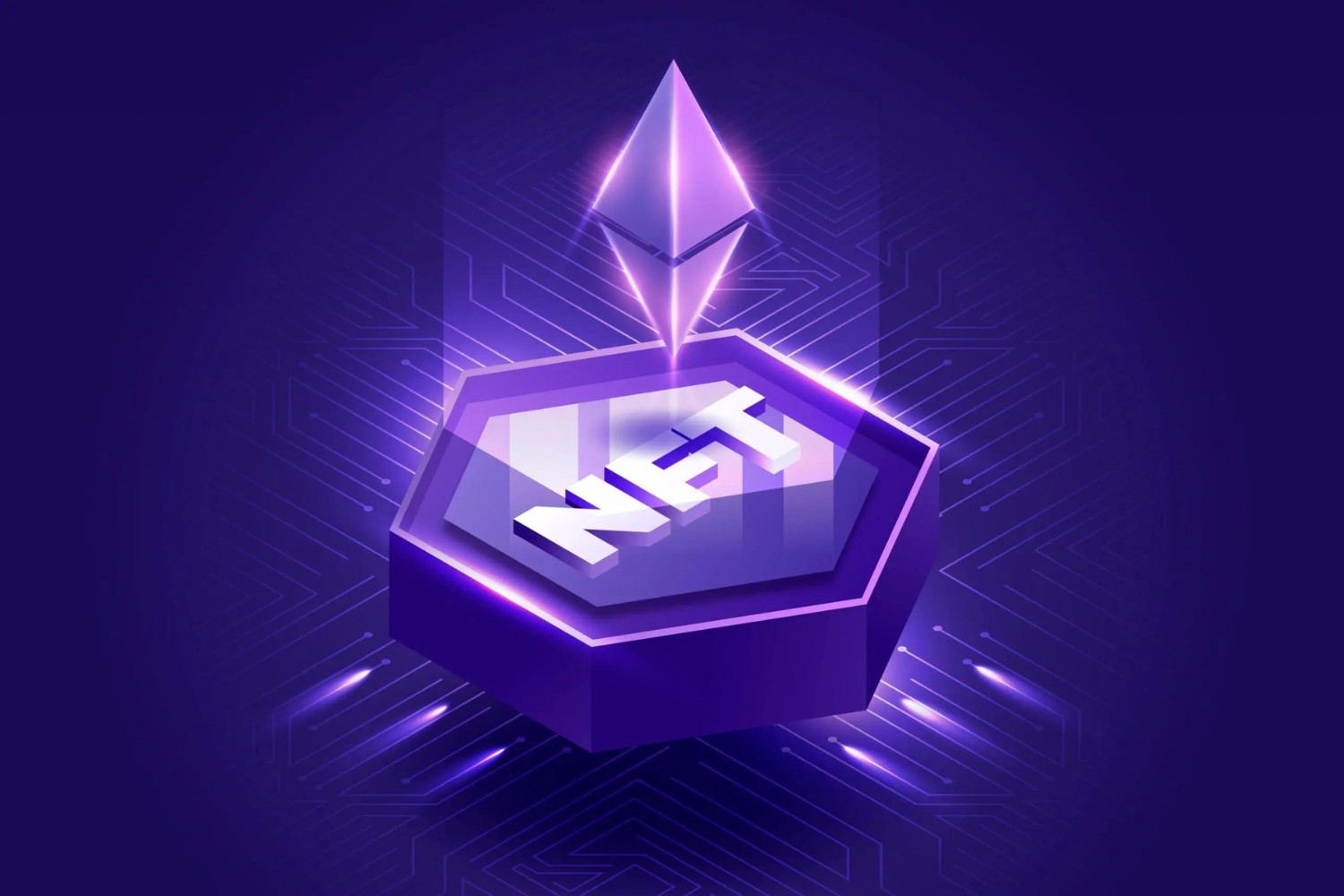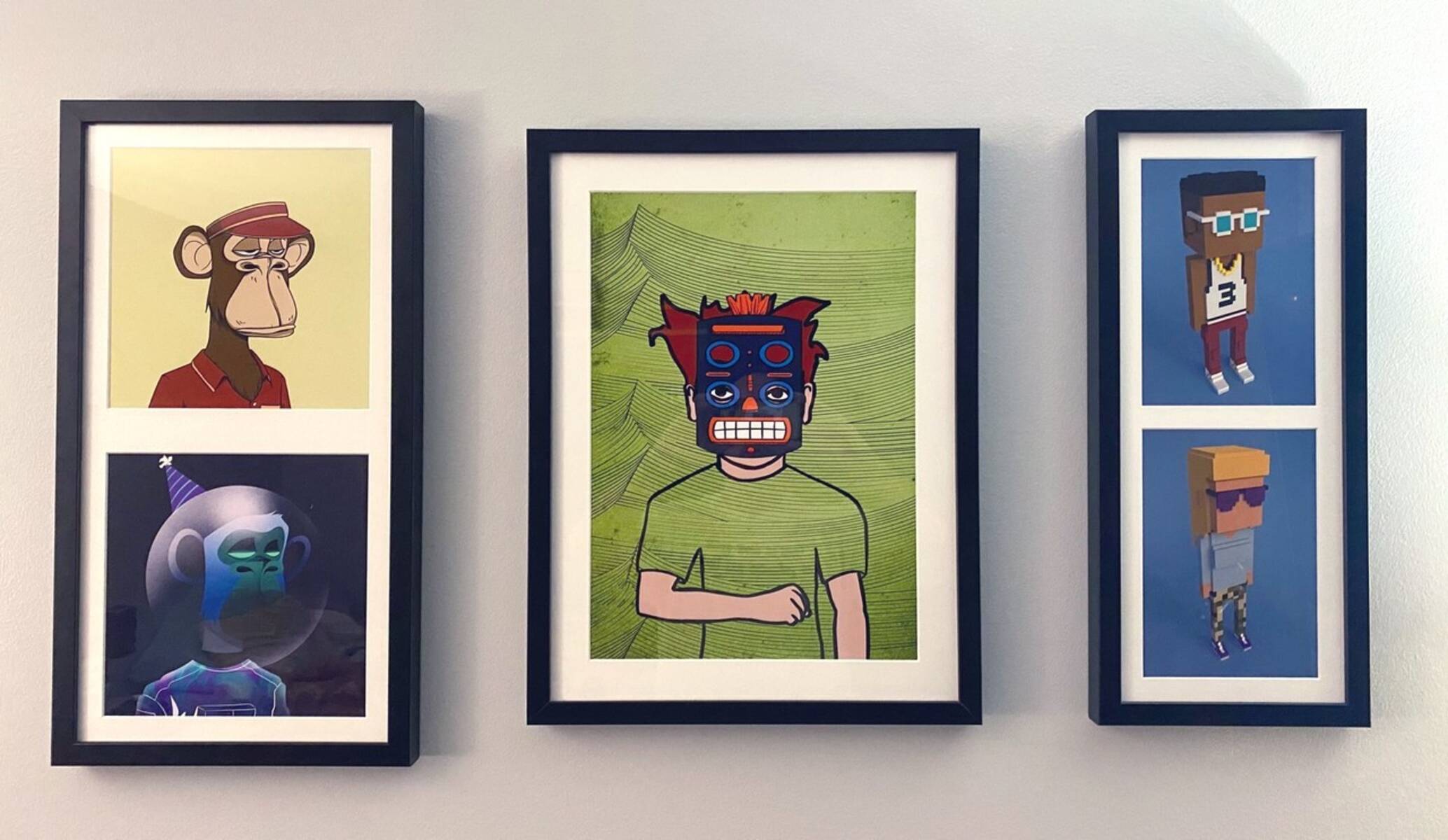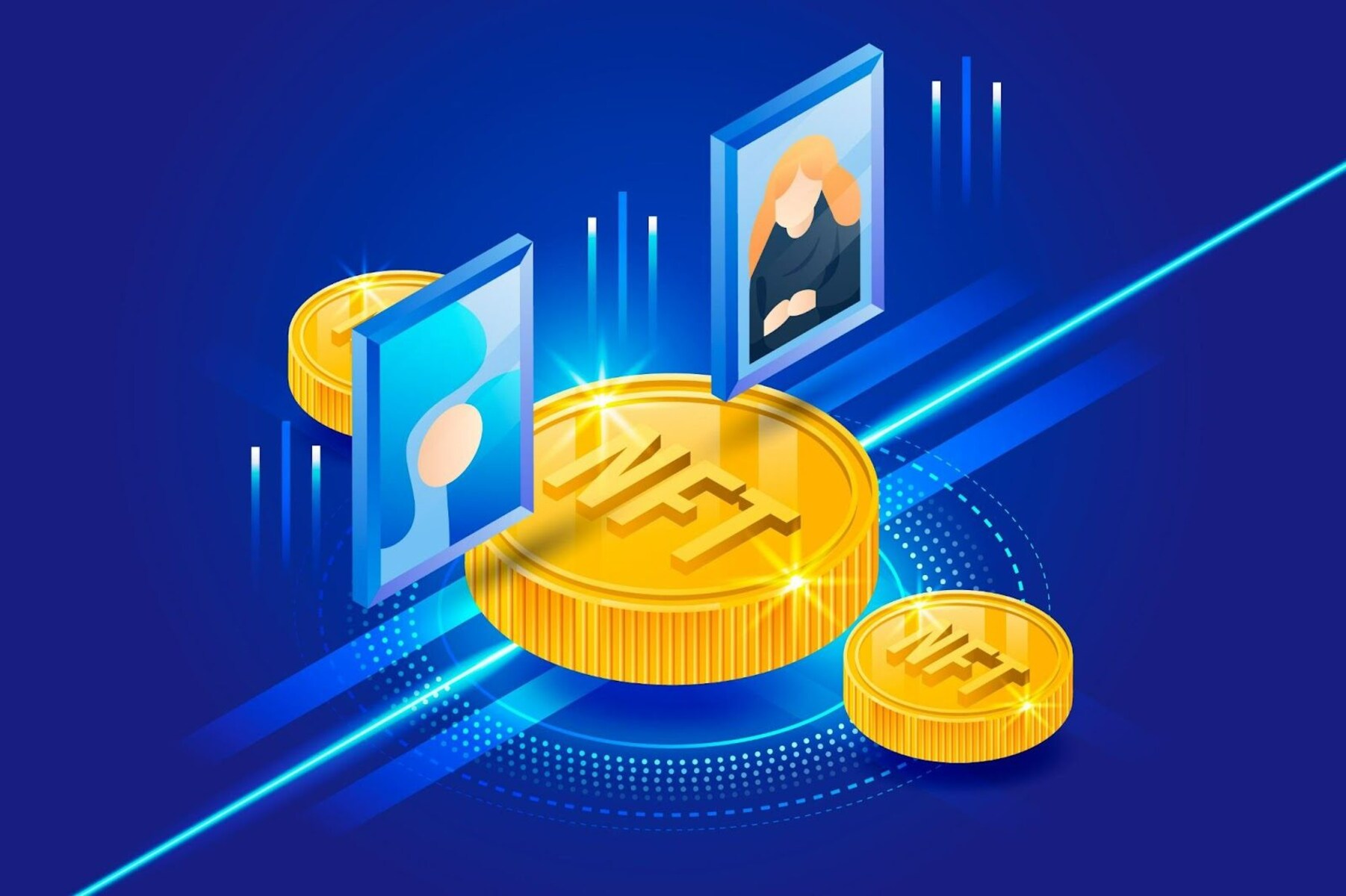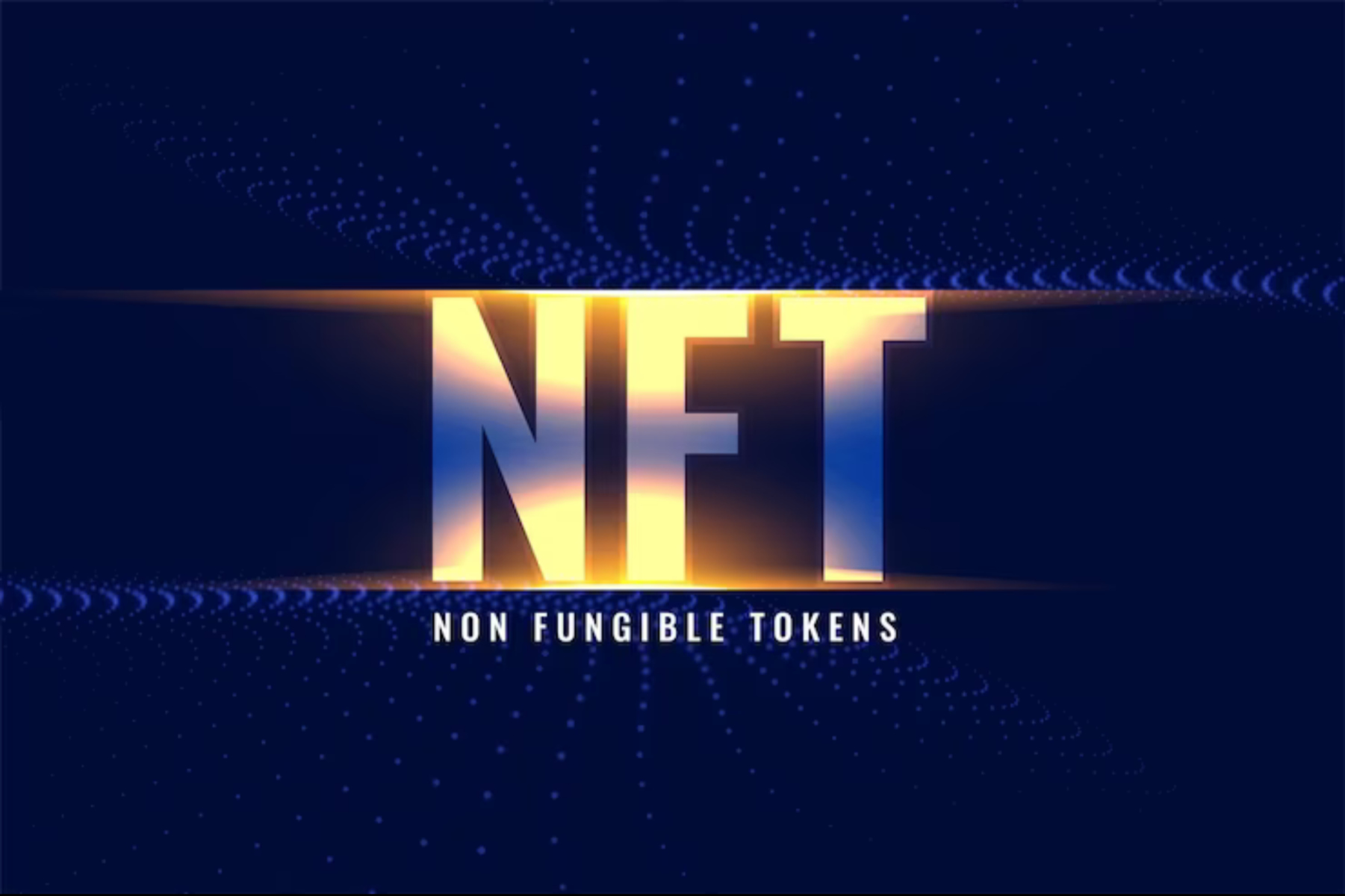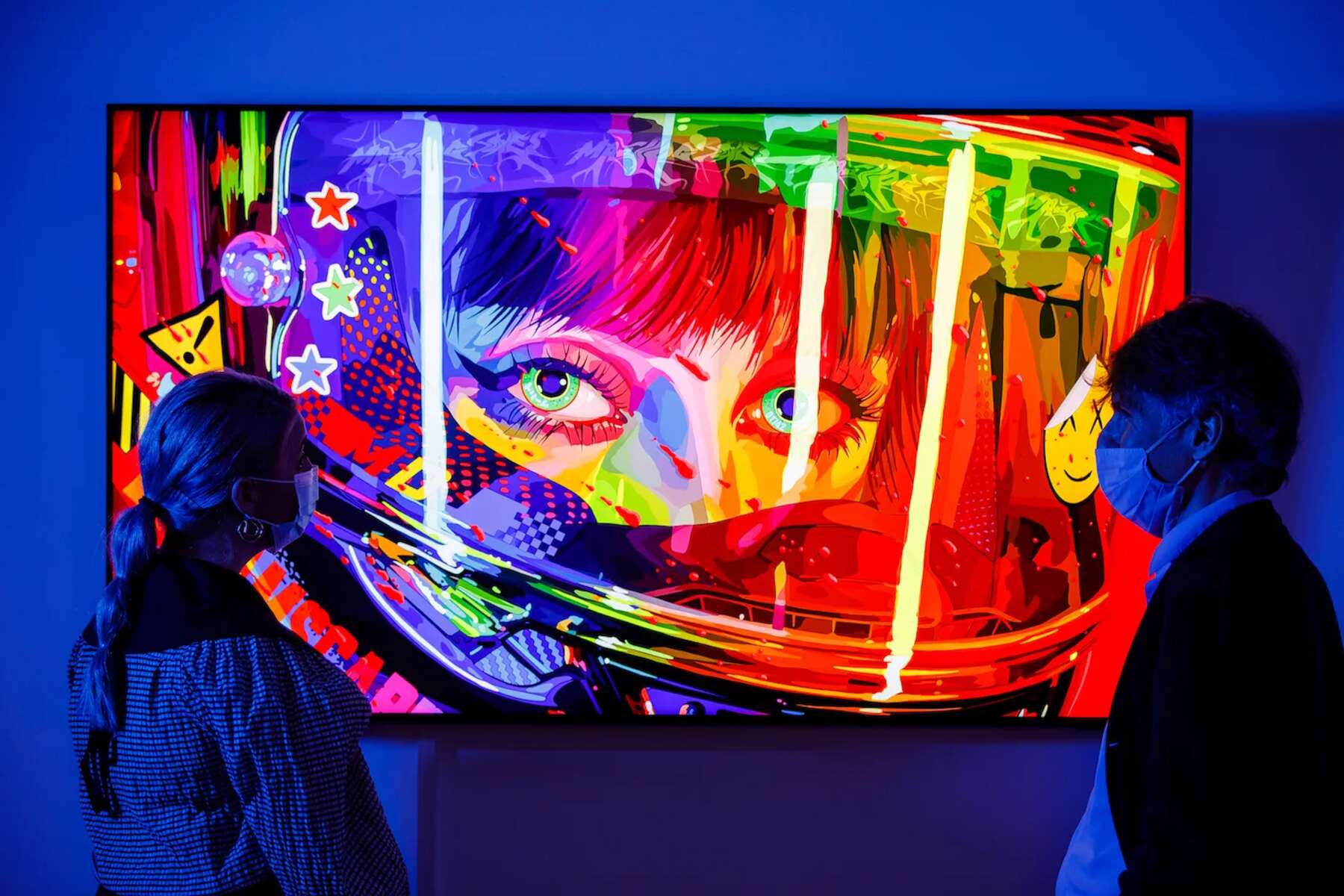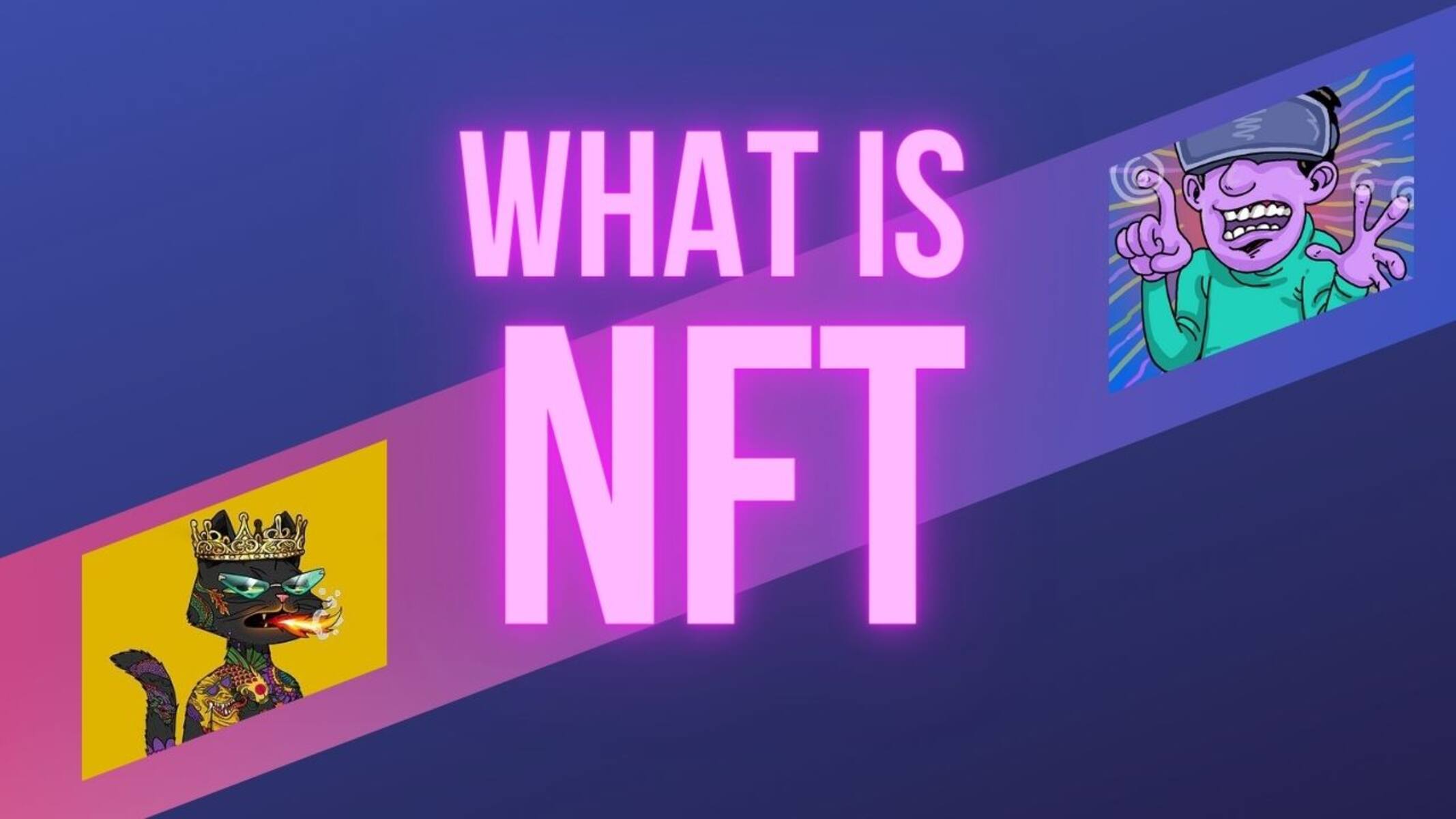Introduction
Welcome to the fascinating world of non-fungible tokens (NFTs)! In recent years, NFTs have taken the digital art and collectibles market by storm, revolutionizing the way we view and trade digital assets. One common term that you may come across in the world of NFTs is “minting.”
But what exactly does “minting” mean in the context of NFTs? In this article, we will delve into the concept of minting and explore its significance within the NFT ecosystem.
To understand minting, let’s first take a quick look at what NFTs are. A non-fungible token is a type of digital asset that represents ownership or proof of authenticity for a unique item or piece of content, such as artwork, music, videos, or virtual real estate. Unlike fungible assets like currencies or cryptocurrencies, each NFT is distinct and cannot be exchanged on a one-to-one basis.
Minting, in the context of NFTs, refers to the process of creating or issuing a new token on a blockchain network. Similar to how physical coins are minted, minting NFTs involves the creation of a unique digital asset and encoding its ownership information on a blockchain, typically using smart contracts.
This minting process is essential as it establishes the uniqueness and provenance of the NFT. Once minted, the NFT becomes a one-of-a-kind digital asset that can be bought, sold, and owned by individuals in the NFT marketplace. Minting essentially gives birth to a new NFT, creating an item with a specific identity and ownership record.
Now that we have a general understanding of what minting entails, let’s take a deeper look into how minting works within the NFT world and the benefits it brings to creators and collectors alike.
Definition of NFT
Before we delve further into the concept of minting, it is crucial to have a clear understanding of what exactly a non-fungible token (NFT) is.
An NFT is a type of digital asset that represents ownership or proof of authenticity for a unique item or piece of content. Unlike cryptocurrencies such as Bitcoin or Ethereum, which are fungible and can be exchanged on a one-to-one basis, NFTs are indivisible and cannot be exchanged on a like-for-like basis.
Each NFT has a distinct identity that is tied to its underlying blockchain technology. This identity encompasses various attributes, including its title, description, metadata, and the owner’s information. This information is stored securely on the blockchain, ensuring transparency and immutability.
NFTs have gained immense popularity in recent years, primarily driven by the digital art and collectibles market. Artists and creators can tokenize their digital artwork or unique creations as NFTs, allowing them to sell these digital assets in a secure and verifiable manner.
The unique characteristics of NFTs make them highly desirable and valuable to collectors. Owning an NFT grants the holder exclusive rights to the digital asset and allows them to display and trade it within the NFT marketplace.
It’s important to note that while NFTs are predominantly associated with digital art, their application extends beyond that. NFTs can represent a wide range of digital assets, including music, videos, virtual real estate, virtual goods in gaming, and even domain names.
The value of an NFT is derived from its scarcity, authenticity, and demand within the marketplace. Collectors are willing to pay a premium for unique and valuable NFTs, making it a lucrative avenue for artists, creators, and collectors alike.
Now that we have a solid understanding of what NFTs are, let’s dive into the concept of minting and explore its significance within the NFT ecosystem.
What is Minting?
In the world of non-fungible tokens (NFTs), minting refers to the process of creating or issuing a new token on a blockchain network. It is the act of transforming a digital asset into a unique, indivisible, and verifiable item that can be bought, sold, and owned in the NFT marketplace.
Minting is akin to the traditional concept of minting physical coins. Just as a coin is minted to establish its authenticity and value, NFTs are minted to establish the uniqueness and provenance of a digital asset.
The minting process typically involves encoding ownership information and other attributes of the digital asset onto the underlying blockchain network using smart contracts. These smart contracts serve as the foundation for the NFT, providing a secure and transparent record of the asset’s ownership and transaction history.
When minting an NFT, creators or artists can attach metadata to the token, including a title, description, image, video, or any other relevant information that adds value and context to the digital asset. This metadata becomes an integral part of the NFT, providing additional details and enhancing its overall appeal within the marketplace.
Minting is a crucial step in the lifecycle of an NFT. It establishes its uniqueness, separates it from other similar assets, and gives it a distinct identity that can be verified and validated by anyone interacting with the token.
Once an NFT is minted, it can be listed for sale or auctioned in various NFT marketplaces, where collectors and enthusiasts can buy, trade, and own these digital assets. The minting process provides creators with the ability to monetize their work and generate revenue by selling their NFTs to interested buyers.
It’s worth noting that not all NFTs are minted by their original creators. In some cases, established platforms or individuals known as “minters” take on the responsibility of minting NFTs on behalf of the creators. This allows creators to focus on their artistic endeavors while leveraging the expertise and infrastructure of experienced minters.
In the next section, we’ll dive deeper into how the minting process works in the NFT ecosystem, shedding light on the technical aspects and considerations involved.
How Does Minting Work in the NFT World?
Minting in the NFT world involves a series of technical processes that ensure the creation and tokenization of a unique digital asset on a blockchain network. Understanding how minting works is essential for artists, creators, collectors, and anyone interested in participating in the NFT marketplace.
The process of minting an NFT starts with selecting a suitable blockchain network. Ethereum is the most widely used blockchain for NFTs, thanks to its robust smart contract capabilities and established infrastructure. Other blockchain networks like Binance Smart Chain and Flow are also gaining popularity in the NFT space.
Once a blockchain network is chosen, the creator or minter initiates the minting process by interacting with a smart contract. Smart contracts are self-executing contracts with the terms of the agreement written directly into their code. They define the rules and conditions under which the NFT operates and ensure trust, security, and transparency.
The minting process typically involves the following steps:
- Preparing the digital asset: The creator prepares the digital asset that will be transformed into an NFT. This could be a piece of artwork, a video, music, or any other form of digital content.
- Minting the NFT: The creator or minter interacts with the smart contract and provides the necessary details and metadata for the NFT. This includes the title, description, image or media file, and any additional attributes that enhance the value of the digital asset.
- Encoding and storing on the blockchain: The smart contract encodes the ownership information and metadata of the NFT, creating a unique token with a distinct identity. This information is then stored securely on the blockchain, ensuring transparency and immutability.
- Verification and validation: Once minted, the NFT can be verified and validated by anyone on the blockchain network. The ownership details, transaction history, and other attributes can be accessed and verified, ensuring the authenticity and provenance of the digital asset.
After the minting process is complete, the newly created NFT becomes available for sale, auction, or trade in NFT marketplaces. Collectors can browse through the marketplace, discover exciting NFTs, and make purchases based on their interests and preferences.
It’s important to note that the process of minting can vary slightly depending on the blockchain network and the platform used for minting. However, the fundamental concept remains the same – transforming a digital asset into a unique and verifiable NFT on the blockchain.
In the next section, we’ll explore the detailed steps involved in the minting process and the benefits it brings to creators and collectors in the NFT ecosystem.
Minting Process Explained
The minting process is a crucial step in transforming a digital asset into a non-fungible token (NFT). It involves a series of steps that ensure the creation, verification, and tokenization of a unique digital item on a blockchain network. Let’s dive deeper into the minting process and explore its various components.
1. Choosing the Blockchain:
The first step in the minting process is selecting the appropriate blockchain network. Ethereum is the most commonly used blockchain for minting NFTs due to its extensive smart contract functionality and thriving NFT ecosystem. However, other blockchains like Binance Smart Chain, Flow, and Solana are also gaining traction in the NFT space.
2. Creating the Digital Asset:
Before minting an NFT, the creator or minter must prepare the digital asset that will be tokenized. This could be a piece of artwork, a music file, a video clip, or any other unique digital content.
3. Minting the NFT:
The next step involves interacting with a smart contract to initiate the minting process. The smart contract contains the necessary code and instructions for creating and managing the NFT. The creator or minter provides the required details and attributes, such as the title, description, image or media file, and any additional metadata that adds value to the NFT.
4. Encoding and Storing on the Blockchain:
Once the required information is provided, the smart contract encodes the ownership details and metadata of the NFT onto the chosen blockchain. This process ensures that the NFT has a unique identity and a verifiable record of ownership. The encoded information is stored securely on the blockchain, making it transparent and immutable.
5. Verification and Validation:
After the minting process is completed, the NFT can be verified and validated by anyone on the blockchain network. This allows potential buyers or collectors to review the authenticity, ownership history, and other relevant details of the NFT before making a purchase.
6. NFT Marketplace Integration:
Once the NFT is minted, it can be listed for sale or auctioned on various NFT marketplaces. These marketplaces provide a platform for creators to showcase their NFTs and for collectors to browse and purchase these unique digital assets.
It’s important to note that minting processes may vary slightly depending on the blockchain network or the platform used for minting. However, the overall concept and steps remain consistent across different platforms.
The minting process is a key element in the NFT ecosystem, enabling creators to transform their digital creations into valuable and tradable assets while providing collectors with unique and authenticated digital items to own and enjoy.
Benefits of Minting NFTs
Minting non-fungible tokens (NFTs) comes with a wide range of benefits for creators, collectors, and the NFT ecosystem as a whole. Let’s explore some of the key advantages of minting NFTs:
1. Ownership and Authenticity:
By minting an NFT, creators can establish ownership and prove the authenticity of their digital assets. Each NFT is unique and tokenized on a blockchain, providing a verifiable record of ownership and ensuring the originality and provenance of the digital item.
2. Monetization Opportunities:
Minting NFTs opens up new avenues for creators to monetize their work. Artists, musicians, writers, and other content creators can tokenize their creations and sell them directly to collectors in NFT marketplaces, eliminating the need for intermediaries and allowing them to retain a greater share of the revenue.
3. Artist Control and Royalties:
Smart contracts associated with NFTs can be programmed to include royalty clauses. This means that creators can earn ongoing royalties every time their NFT is sold or resold in secondary markets, ensuring a more sustainable income stream and rewarding them for the long-term value of their work.
4. Exposure and Reach:
The NFT marketplace provides a global platform for creators to showcase their work to a vast audience. Minting NFTs can attract collectors, enthusiasts, and fans from all over the world, leading to increased exposure and opportunities for collaboration, recognition, and audience growth.
5. Fractional Ownership and Investment Potential:
NFTs can be divided into fractional shares, allowing multiple individuals to collectively own a piece of the digital asset. This opens up investment opportunities for collectors who may not be able to afford the full price of an NFT, while also diversifying the ownership base and potentially increasing liquidity in the market.
6. Enhanced Collectible Experience:
NFTs provide unique and immersive collectible experiences. Digital artwork can be displayed in virtual galleries or virtual reality environments, offering a novel way for collectors to appreciate and showcase their NFT collections. Additionally, metadata attached to NFTs can include interactions, unlockable content, or additional perks, enriching the overall collectible experience.
7. Creativity and Innovation:
Minting NFTs encourages creators to explore new forms of digital expression and experiment with innovative concepts. The decentralized nature of NFTs allows for greater artistic freedom and the ability to push boundaries, creating a space for unique and boundary-pushing digital experiences.
These are just a few of the benefits that come with minting NFTs. As the NFT ecosystem continues to evolve and mature, we can expect to see even more opportunities and advantages for creators and collectors alike.
Factors Affecting the Value of Minted NFTs
The value of minted non-fungible tokens (NFTs) can vary widely, driven by a combination of factors that influence their desirability and perceived worth. Understanding these factors is essential for creators, collectors, and investors in the NFT space. Let’s explore some of the key elements that impact the value of minted NFTs:
1. Scarcity:
Scarcity plays a significant role in determining the value of NFTs. The more limited the supply of a particular NFT, the higher its perceived value. Rarity can be influenced by factors such as the total number of editions or the uniqueness of the digital asset, creating a sense of exclusivity among collectors.
2. Artist Reputation:
The reputation and recognition of the artist or creator behind an NFT can greatly impact its value. Well-established artists or creators with a strong following and a track record of success may command higher prices for their minted NFTs due to the perceived value associated with their name and body of work.
3. Concept and Aesthetics:
The underlying concept and visual appeal of an NFT contribute significantly to its value. Collectors are drawn to unique, visually stunning, or thought-provoking digital assets that stand out from the crowd. The quality and execution of the artwork, along with the emotional and intellectual resonance it evokes, can enhance the perceived value of an NFT.
4. Utility and Functionality:
Some NFTs offer additional utility or functionality beyond their aesthetic value. For example, NFTs tied to virtual worlds or gaming platforms may grant special privileges, access to exclusive content, or in-game advantages, making them more desirable and valuable to collectors and gamers.
5. Historical Significance and Cultural Impact:
NFTs that hold historical significance or have a cultural impact tend to attract higher value. These can include digital assets associated with major events, iconic moments, or influential figures. The historical context and cultural relevance can contribute to the intrinsic value and long-term investment potential of the minted NFT.
6. Demand and Market Trends:
The demand for specific types of NFTs can fluctuate based on market trends and collector preferences. Emerging trends, collaborations, celebrity endorsements, or media attention can create a surge in demand for certain NFTs, driving up their value. Staying informed about market trends and understanding the pulse of the NFT community is crucial in assessing the value of minted NFTs.
7. Secondary Market Activity:
The history of sales and transactions in the secondary markets can provide insights into the value and market perception of an NFT. NFTs that have achieved significant sales or have a history of trading at higher prices may be perceived as more valuable due to their proven market demand.
It’s essential to remember that the value of minted NFTs is subjective and can be influenced by various personal, cultural, and market factors. As the NFT market continues to evolve, new factors and dynamics may come into play, further shaping the value and perception of these unique digital assets.
Role of Minters in the NFT Community
Minters play a crucial role in the non-fungible token (NFT) community, acting as key facilitators in the process of minting and launching NFTs. They provide valuable support and services to artists, creators, and collectors, contributing to the growth and success of the NFT ecosystem. Let’s explore the roles and responsibilities of minters in the NFT community:
1. Technical Expertise:
Minters possess technical expertise in blockchain technology, specifically in the areas of smart contracts and tokenization. They have a deep understanding of the minting process and the technical aspects associated with creating and managing NFTs. Their knowledge and expertise help artists and creators navigate the complexities of the blockchain space.
2. Platform and Infrastructure:
Minters often operate platforms or marketplaces where creators can mint and sell their NFTs. These platforms provide the necessary infrastructure, tools, and user interfaces for minting NFTs, making the process more accessible and user-friendly. Minters are responsible for ensuring the smooth functioning and security of these platforms.
3. Collaboration and Promotion:
Minters often collaborate with artists, creators, or influencers to mint NFTs and promote them to a wider audience. By leveraging their networks and industry connections, minters help creators gain exposure, increase visibility, and generate interest in their minted NFTs. This collaborative effort creates win-win opportunities for both the creators and the minters.
4. Tokenomics and Royalties:
Minters are involved in establishing the tokenomics and royalty structures associated with minted NFTs. They help creators define the royalty percentages and terms for secondary market sales, ensuring that creators receive ongoing compensation as their NFTs are resold. Minters play a significant role in implementing smart contracts that automate royalty payments.
5. Education and Support:
Minters provide education and support to artists, creators, and collectors who are new to the NFT space. They guide them through the minting process, explain the concepts of NFTs and blockchain, and answer any questions or concerns. Minters contribute to the overall education and awareness of NFTs within the community.
6. Curating Quality NFTs:
Minters often curate and evaluate the quality of NFTs to maintain a certain level of standards within their platforms or marketplaces. They play a role in selecting NFTs that align with their platform’s or market’s vision, ensuring that only unique, valuable, and legitimate NFTs are available for sale.
7. Ensuring Compliance and Integrity:
Minters are responsible for ensuring compliance with relevant laws, regulations, and guidelines in the NFT space. They ensure ethical practices and integrity within their platforms, protecting the interests of creators and collectors and fostering a trusted and transparent marketplace.
The role of minters is multidimensional and critical in the NFT community. They act as enablers, providing the necessary support, infrastructure, and expertise for artists, creators, and collectors to participate and thrive in the world of NFTs.
Famous Examples of Minted NFTs
The world of non-fungible tokens (NFTs) has witnessed an explosion of creativity and innovation, resulting in several notable and influential minted NFTs. These groundbreaking examples have not only captured the attention of collectors but have also made a significant impact on the wider art, music, and digital content industries. Let’s explore some of the famous examples of minted NFTs:
1. “Everydays: The First 5000 Days” by Beeple:
Beeple’s digital artwork, “Everydays: The First 5000 Days,” made history when it sold as an NFT for a staggering $69 million at a Christie’s auction. It showcases a collage of images created by the artist every day for over 13 years. This groundbreaking sale solidified NFTs as a legitimate and valuable art form.
2. “Crossroads” by Beeple:
Another notable work by Beeple, “Crossroads,” was sold as an NFT for $6.6 million. This artwork depicts former President Donald Trump lying on the ground, surrounded by rioters during the Capitol Hill incident in January 2021. This piece generated significant discussion and controversy.
3. CryptoPunks” by Larva Labs:
CryptoPunks are one of the earliest and most iconic examples of minted NFTs. They are 10,000 unique, algorithmically generated 24×24 pixel art characters. As early adopters of the NFT space, CryptoPunks have gained immense popularity and have become highly sought after by collectors.
4. “The First Tweet” by Jack Dorsey:
Jack Dorsey, the co-founder of Twitter, minted his first-ever tweet as an NFT and sold it for over $2.9 million. This historic tweet, “just setting up my twttr,” marked the beginning of the Twitter journey and has now become a valuable digital collectible.
5. “Mars House” by Krista Kim:
“Mars House” is a virtual NFT house created by artist Krista Kim. It was sold for approximately $512,000 and exists solely in the digital realm. The owner of this NFT has the exclusive right to display and explore the virtual Mars House, offering a unique and immersive experience.
6. “Nyan Cat” by Chris Torres:
Chris Torres minted the popular internet meme “Nyan Cat” as an NFT, which was then auctioned off for approximately $590,000. This animated GIF, featuring a flying cat leaving a rainbow trail, became one of the first viral sensations to be minted as an NFT.
7. “Bored Ape Yacht Club” by Yuga Labs:
The “Bored Ape Yacht Club” is a collection of 10,000 unique, cartoonish ape characters with various accessories and attributes. These NFT apes have gained a significant following and have become a status symbol within the NFT community.
These are just a few examples of the famous minted NFTs that have garnered attention, record-breaking sales, and cultural significance. They represent the diverse and boundary-pushing nature of NFTs, capturing the imagination of collectors and reshaping the digital content landscape.
Conclusion
The world of non-fungible tokens (NFTs) and minting has revolutionized how we perceive, trade, and value digital assets. Minting plays a pivotal role in transforming digital creations into unique, verifiable, and highly coveted NFTs. Throughout this article, we have explored the concept of minting, the process involved, and the various factors that influence the value of minted NFTs.
Minting NFTs provides creators with the opportunity to establish ownership, prove the authenticity of their digital assets, and monetize their work in a decentralized and transparent manner. It opens up new avenues for creativity and innovation, encouraging artists, musicians, writers, and other content creators to explore new forms of digital expression.
Collectors and investors also benefit from the minting of NFTs. They have access to a wide variety of unique and valuable digital assets that can be bought, sold, and owned as part of their growing collections. The ability to divide NFTs into fractional shares and earn royalties on secondary market sales adds further potential for financial growth and investment opportunities.
Furthermore, minters play a vital role in the NFT community. They provide technical expertise, platforms, curation, collaboration, and support to artists, creators, and collectors. Minters ensure the smooth functioning of NFT marketplaces, maintain quality standards, and foster a trusted and vibrant ecosystem for minting and trading NFTs.
Additionally, famous examples of minted NFTs have demonstrated the immense value and impact that digital assets can have. These groundbreaking works have not only pushed boundaries but have also reshaped industries and created new possibilities for digital art, collectibles, and virtual experiences.
As the NFT space continues to evolve, it is essential for creators, collectors, and participants to stay informed and adapt to the changing landscape. Understanding the intricacies of minting, the factors influencing value, and the role of minters will empower individuals to navigate the NFT ecosystem successfully.
In conclusion, the minting of NFTs has transformed the way we perceive and engage with digital assets. It has redefined the boundaries of art, collectibles, and ownership in the digital age. With its vast potential and disruptive nature, the NFT space continues to shape the future of creative expression, ownership, and the digital economy as a whole.







